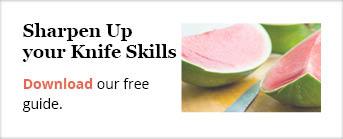/OBrien%20Knife%20Honing%20and%20Sharpeing%20promo%20image.jpg?width=1600&height=900&name=OBrien%20Knife%20Honing%20and%20Sharpeing%20promo%20image.jpg)
We are pleased to introduce Food Comics from The Chopping Block where our resident Cartoonist Tom O'Brien illustrates his cooking adventures. In this edition, he shares how to hone and sharpen knives.
/OBrien%20Knife%20Honing%20and%20Sharpeing%20comic%20update.jpg?width=600&name=OBrien%20Knife%20Honing%20and%20Sharpeing%20comic%20update.jpg)
A new year is the perfect time to hone your knife skills. Sign up for an upcoming class at The Chopping Block:
- Friday, January 10 10am Lincoln Square
- Wednesday, January 22 7pm Lincoln Square
- Tuesday, January 28 7pm Lincoln Square
- Monday, February 3 6pm Merchandise Mart
- Sunday, February 9 11am Merchandise Mart
Then, download our free guide to getting started on your own at home: Knife Skills 101.
Love our food comics but want a text-only version for easy reference in the kitchen? Get the Food Comic in a PDF form here.
/OBrien%20Knife%20Honing%20and%20Sharpeing%20promo%20image.jpg?width=334&name=OBrien%20Knife%20Honing%20and%20Sharpeing%20promo%20image.jpg)

